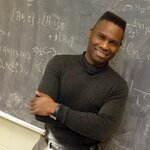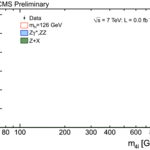Physics

Before discussing the recent Planck results and my opinion on the present situation, let me present here an extract of my ICFP 2012 paper Pre-Big Bang, fundamental Physics and noncyclic cosmologies, http://hal.archives-ouvertes.fr/hal-00795588http://hal.archives-ouvertes.fr/docs/00/79/55/88/PDF/PreBBCreteNew.pdf
or
http://www.ma.utexas.edu/mp_arc-bin/mpa?yn=13-18http://www.ma.utexas.edu/mp_arc/c/13/13-18.pdf
Page 3, I write :
Basic equations of conventional cosmology should then be reconsidered, such as the well-known Friedmann relation [31,32]:
H2 = as−2 (das /dt)2 = 8π G ρ/3 − k c2 as−2…
Sorry, I again spent a long time without writing anything here... I hope you are having a happy 2013 in spite of all kinds of "sequestrations" on both sides of the Atlantic.
Here are my two last papers. They will appear in the Proceedings of the ICFP 2012 Conference (Crete, June 2012) to be published by the European Physical Journal Web of Conferences, http://www.epj-conferences.org/ , but can already be found at the following adresses :
HAL (France)
http://hal.archives-ouvertes.fr/hal-00795588
http://hal.archives-ouvertes.fr/docs/00/79/55/88/PDF/PreBBCreteNew.pdf
http://hal.archives-…

While there are still plenty of mysteries in electromagnetics, electrical engineers are sure of one thing; current is carried through materials by flowing electrons.
In physics, Luttinger's theorem states that the number of electrons in a material is the same as the number of electrons in all of its atoms added together. Much-studied conducting materials, such as metals and semiconductors, have held true to the idea.
Until now. For copper-containing superconductors known as cuprates, physicists have found there are not enough electrons to carry the current. In…

Here I vow to never "reblog", but exceptionally I will break that rule, translating from Italian a very nice article recently appeared on the Italian newspaper "Il Sole-24 Ore". The author is the INFN President, Fernando Ferroni. The reason why I break the rule is that the piece is quite clear and many of you may enjoy it. [The article transcript was taken from here]
A phantom is roaming the Science citadel. And it fosters fear and hope in physicists around the world. Those who last year have celebrated the discovery of the Higgs boson by the two formidable research teams of ATLAS and CMS,…

One of the most basic laws of quantum mechanics is the superposition principle - a system can be in more than one state, that is to say it can exist in multiple realities, at once.
This phenomenon exists only until the system is observed or measured in some way way. As soon as such a system is measured, its superposition collapses into a single state. Thus, we, who are constantly observing and measuring, experience the world around us as existing in a single reality.
The principle of superposition was first demonstrated in 1922 by Otto Stern and Walther Gerlach, who observed the…

The presentations of the last few days at the Neutrino Telescopes conference in Venice allowed me to get to full speed with the developments, new ideas, and new experiments taking data or just in design phase in this fascinating, relatively young field of investigation at the crossroads of particle physics and astrophysics.
The talk slides are online in the conference site, but as usual by just flipping them one usually does not manage to get the most important points. So I am providing summaries of every talk, at the conference blog site.
Yesterday I posted several articles there. Here is a…

Here is a list of the reports of talks given yesterday at the Neutrino Telescope conference in Venice. You should give these a look if you are interested in sterile neutrinos, in the mass hierarchy of neutrinos, or in the phenomenology of neutrinos in general. THe reports are a bit technical and there are at present no figures to complement the text, but figures will be added soon.
- Joachim Kopp: Status of Sterile Neutrino Scenarios
- Michael Cribier: Reactor Antineutrino Anomalies in Europe- Seon-Hee Seo: results from Reno- Patrick Huber: Reactor Neutrinos, Fluxes and US Plans- Marzio Nessi…

Am following the Neutrino Telescope conference in Venice, which started yesterday in the beautiful setting of Palazzo Franchetti. For once I am quite happy to walk to work -different from the usual hour-and-something commute to Padova, where I have my office in the Physics Department. But I am not idle: I have been producing reports of all the talks at the conference, in the conference blog site.
Here is a list of pointers to the talk reports:
- A Tribute to Milla Baldo Ceolin
- Carlo Rubbia: A Millimole of Muons for a Higgs Factory- Solar and Geo Neutrinos in Borexino- Hiroko Watanabe:…

For the series "ideas worth spreading", CMS has copied the nice idea of ATLAS of producing an animated gif with increasing data leading to the Higgs boson discovery.
This is the mass distribution of Higgs boson candidates, detected by collecting events featuring four charged leptons (electrons or muons). The leptons are combined in pairs, and one pair (of same flavour) will usually yield a mass in the ballpark of the Z boson mass; the other pair will have lower energy if it is produced by an off-shell Z boson. Of course all four-lepton pairs compatible with quality criteria are kept, and the…

Carlo Rubbia discussed the prospects of constructing a muon collider to produce large amounts of Higgs bosons and study their properties in detail, crucially measuring the natural width of the particle, and testing couplings to a precision that LHC can't arrive at, to verify whether the particle is the Standard Model Higgs or if there are anomalies. The talk is discussed in detail in this report.
Here I just recall a question I asked Rubbia after the talk:
"You recalled the history of the Z discovery and subsequent LEP studies in motivating a muonic Higgs factory. I would like to point out…